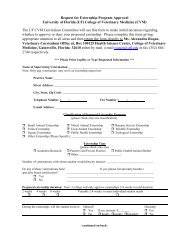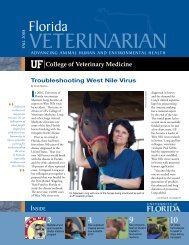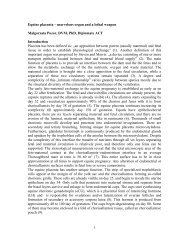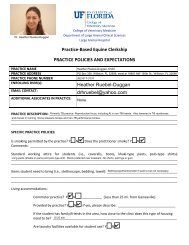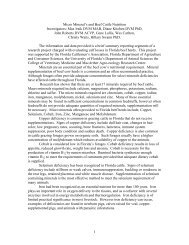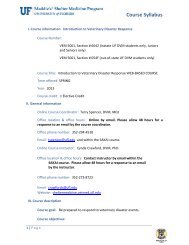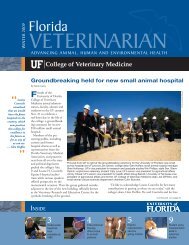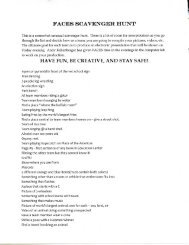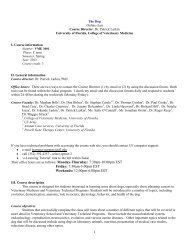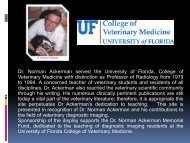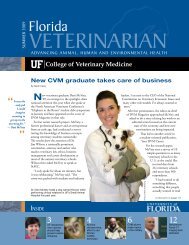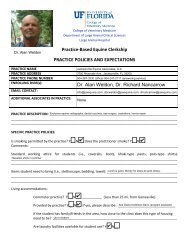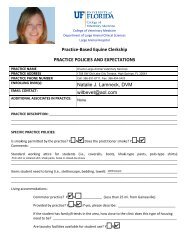Veterinarian - University of Florida College of Veterinary Medicine
Veterinarian - University of Florida College of Veterinary Medicine
Veterinarian - University of Florida College of Veterinary Medicine
- No tags were found...
Create successful ePaper yourself
Turn your PDF publications into a flip-book with our unique Google optimized e-Paper software.
Photo by Maria FariasPhoto by Maria Farias“We thought Jackie might benefit from the treatment, assnakebite wounds are associated with tissue death,” said JustinShmalberg, D.V.M., a clinical assistant pr<strong>of</strong>essor <strong>of</strong> integrativemedicine at UF. “Such damage generally requires extensivesurgery and additional hospitalization, which adds a largeamount to the bill and to the animal’s time here.”The treatment is provided inside <strong>of</strong> a tube-shaped containerknown as a hyperbaric chamber, through which animalsreceive highly pressurized, 100 percent oxygen delivered totissue that wouldn’t receive it otherwise. Shmalberg andUF veterinary technician Wendy Davies recently receivedextensive training in the safety protocols associated with theuse <strong>of</strong> the hyperbaric chamber, which was installed at UF inmid-October.Over the next three days, Jackie received three treatments,each lasting about an hour. Although they were optimisticthe treatments would help Jackie, UF veterinarians werenonetheless surprised by what they saw.“After the first two treatments, there was an impressiveimprovement <strong>of</strong> the swelling, discharge and discoloration <strong>of</strong>the area,” Vigani said. “It was totally unexpected. The area that24 hours before, we had no doubt would have required surgery,after the second treatment was almost completely healed.”Although hyperbaric oxygen therapy is available andused worldwide in human medicine, with many scientificpublications reporting beneficial effects for human diseasesand in animal models, its use in veterinary medicine isrelatively new, occurring primarily during the past decade.Dr. Justin Shmalberg looks inside UF’s new hyperbaricchamber on Oct. 30.Jackie is shown with her owner, Jan Smith, <strong>of</strong> Clermont,in the UF Small Animal Hospital on Oct. 30.Hyperbaric chamber technology is now being used by a smallnumber <strong>of</strong> veterinary practices and an even smaller number<strong>of</strong> academic institutions to treat conditions that include nonhealingwounds, particularly external wounds where thereare concerns about blood supply. Crush and burn injuries andtrauma injuries, such as might be caused by animals being hitby cars, being in dog fights or being bit by a snake.“We are always looking for new and emerging ways to treatdifferent conditions, such as non-healing wounds,” Shmalbergsaid. “While we are excited to have this new tool available, wealso feel a responsibility to advance our scientific knowledge <strong>of</strong>how the technique is best used in animals.”Such information will help veterinary practices refine thecircumstances in which hyperbaric oxygen therapy will help toalleviate a patient’s symptoms, he added.As for Jackie, her owners are ecstatic that the dog they call “atreasure to our family” is still with them.“We are completely overwhelmed with joy that Dr. Viganiand the staff at the UF Small Animal Hospital were able to saveJackie’s life,” Jan Smith said.By Sarah CareySpring 2013 | 9



